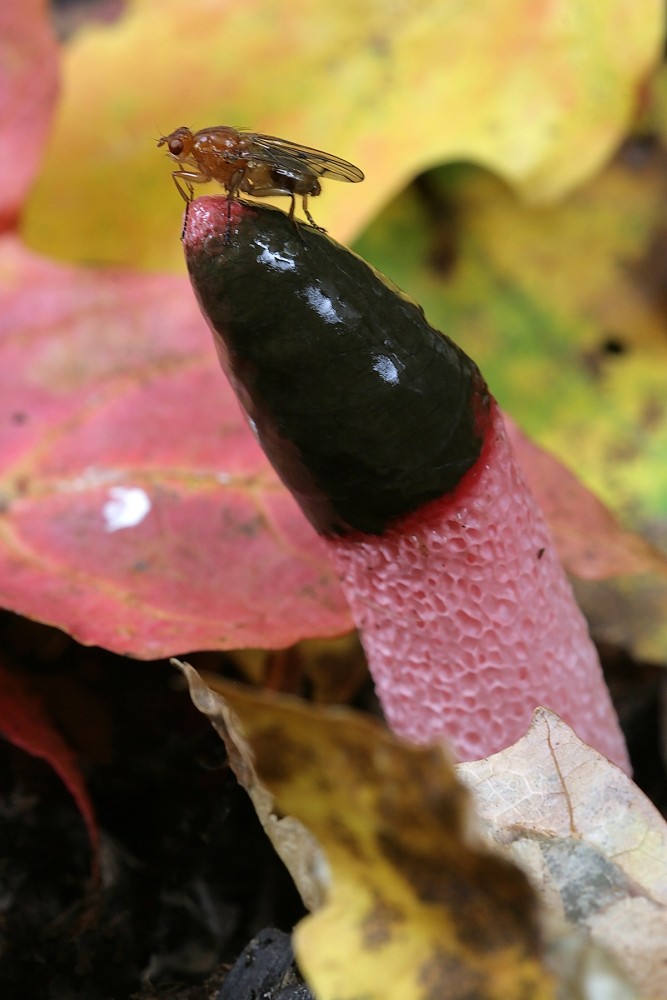The group of fungi known as stinkhorns are aptly named, as their foul odor is easy to detect. All stinkhorns first appear as egg-shaped structures that can be up to two inches high. When the eggs rupture, the mushrooms in this family (Phallaceae) can differ dramatically, but many have a phalliclike shape. This photo shows dog stinkhorn (Mutinus caninus), also known as devil’s dipstick. When mature, all stinkhorns produce an olive-green to olive-brown slimy substance that has a putrid carrion-like smell that is appealing to many insects. This slime is loaded with the fungi’s spores. Insects landing on a stinkhorn get their feet covered with the spore-laden slime while they are busy ingesting it. Once the insects depart, they disperse the spores far and wide.
Stinkhorns appear suddenly, and their growth can almost be observed as they go from the egg stage to maturity with impressive speed. While these fungi are not poisonous, it is doubtful that having smelled them, any human would desire to eat them.


